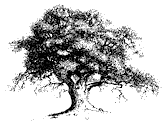| Rithet's
Bog
[Editor's
note: whereas Rithet's Bog is not within the boundaries of
the North Quadra neighbourhood association, it is enjoyed by many
of our residents, and many are curious about its past and future.
This page started with an article, first published in the
April, 2001 issue of the Broadmead Area Residentís Association Newsletter
a.k.a. the BARA Bugle, which is still located below, but updates
have been added above it.]
Map

 Air Photo
Air Photo

- Partnership finalised
and work begins
An agreement has been reached partnering Saanich, the Rithet's
Bog Conservation Society, the Habitat Conservation Trust Fund,
Fisheries & Oceans Canada, and Ducks Unlimited Canada to manage
the Bog for the enjoyment of wildlife and residents. Please
see the Ducks Unlimited
website.
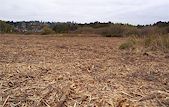 Clearing Clearing
During the summer a huge area was cleared of willows and alder,
intended to open up the area and allow for the return of the lost
water (see article below). Bull rushes and other semi-aquatics
were left.- Culvert dam / weir
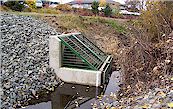 A
weir was constructed where the bog drains into a long culvert
that carries Rithet's Creek under Chatterton, Quadra and eventually
the highway. This has captured the fall rains and partially
re-established the temporary lake to the north along Chatterton.
Swans, ducks and other waterfowl have returned! A
weir was constructed where the bog drains into a long culvert
that carries Rithet's Creek under Chatterton, Quadra and eventually
the highway. This has captured the fall rains and partially
re-established the temporary lake to the north along Chatterton.
Swans, ducks and other waterfowl have returned!
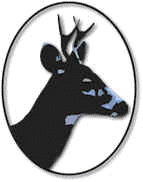

- Lobbying
U Vic PhD candidate Karen Golinski's hydrology study of Rithet's
Bog, commissioned by Saanich, was presented to the Saanich Environmental
Advisory Committee late last year. The report, "An Overview
Assessment of Hydrology and Water Chemistry at Rithet's Bog"*,
details the problems with water level fluctuation and water quality
at the Bog, and makes recommendations for correcting them.
A follow-up presentation by Rithet's Bog Conservation Society
(RBCS) advised that Ducks Unlimited is willing to design a rehabilitation
plan for the Bog in partnership with Saanich Parks, Fisheries
and Oceans Canada (DFO) and RBCS. Both presentations were well
received, and the Committee will make a positive recommendation
to Council.
- Developing a Work Plan
Ducks Unlimited, DFO, Saanich Parks and RBCS have met to identify
information gaps, outline best possible outcomes, and plot the
following course of action:
 |
DU
hydrology engineers and Saanich staff will complete
detailed survey work at the Bog; |
 |
A
water license application will be made to the Ministry
of Water, Land and Air Protection; |
 |
DU
engineers will develop a draft work plan for review
and fine-tuning by the entire group; |
 |
Parks
will then take the plan to Council; |
 |
If
Council approves, work will take place during late
August and early September of 2002 - a year ahead
of the original schedule! |
|
- Fish Fry Survey in preparation
for a Water License application
A 'fry trapping' survey was carried out in early December
to satisfy DFO that no salmon or trout are present in the Bog.
Mesh catch-and-release traps baited with salmon roe were set at
8 sites around the perimeter of the Bog, including inlet and outlet
points.
No salmon or trout were caught, but what we did catch was very
heartening. The 60 stickleback, 2 rough-skinned newts (Taricha
granulosa), and 4 predacious water beetles indicate fairly
'clean', uncontaminated water. The results also provide baseline
information for continued monitoring after rehabilitation work
has been completed.
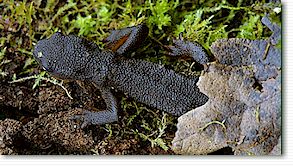
- Water Levels Are Up,
Willows Are Down
Thanks to recent heavy rains, water levels in the Bog are
much higher than in recent years. There is an impressive stretch
of open water near the Dalewood end of Chatterton Way, where Parks
maintenance staff painstakingly removed a 100-metre strip of willows
last August.
We'll have to wait till spring to know if the willow roots will
die as hoped, after being under water for several months during
the winter. In the meantime, wildlife is already taking advantage
of the area. A Great Blue Heron can frequently be seen, hunting
for sticklebacks and frogs, and ducks are arriving in preparation
for the breeding season.
- Regular Volunteer Work
Continues
Volunteers continue to cut broom, remove blackberry and poison
hemlock and pick up litter. If you are interested in helping out
or have questions about activities around the Bog, please contact
Sharon Hartwell at 479-0491 or via email at rithetsbog@hotmail.com
Thanks for your ongoing support!
Sharon Hartwell, President
Rithet's Bog Conservation Society
* a copy of Karen Golinski's
report can be borrowed from the Saanich Parks Office at 1040 McKenzie
Ave. (Phone 744-5341).

[Editor's note: This is the article, first
published in the April, 2001 issue of the
Broadmead Area Residentís Association Newsletter a.k.a. the BARA
Bugle.]
The changing
appearance of Rithet's Bog is a source of concern and frustration
for many Saanich residents. Extensive areas of open water used to
lie along Chatterton Way, providing habitat for abundant waterfowl
and a place where skating was often possible in winter months. Now,
that open water is almost gone, the area overgrown with shrubs and
willows. Yet the Bog has been protected as a Nature Sanctuary since
the Guinness Family donated it to Saanich in 1994. Shouldn't it
be looking better, not drying up?
Where the
open water went - the changing nature of the wetland
 Unfortunately, much of what people admired
about the 'old' Rithet's Bog was not natural. The flooded areas
formerly seen along Chatterton Road were artificial, the result
of shrubs having been cleared so that crops could be planted. Each
fall, when crops were removed, the open area flooded with the winter
rains, until it was pumped out the following spring. It was a situation
very similar to what still occurs at Panama Flats on Interurban
Road. Unfortunately, much of what people admired
about the 'old' Rithet's Bog was not natural. The flooded areas
formerly seen along Chatterton Road were artificial, the result
of shrubs having been cleared so that crops could be planted. Each
fall, when crops were removed, the open area flooded with the winter
rains, until it was pumped out the following spring. It was a situation
very similar to what still occurs at Panama Flats on Interurban
Road.
When the Nature
Sanctuary was established in 1994, all agricultural activity in
the fields ceased. But Nature is not static. Willows immediately
began to reclaim the abandoned fields, consuming large amounts of
water as they did so. After seven years of this natural succession,
a shrub wetland has developed and very little open water remains.
Should we
concentrate on restoring the open water?
The Bog and
its surrounding catchment area have been drastically altered by
agricultural practices and urban development, and much more than
open water and waterfowl habitat are at stake. A series of scientific
studies have indicated that the rare sphagnum community lying in
the heart of the Bog is threatened by a combination of low water
levels, excessive fluctuation in the water table, and the poor quality
of incoming water. Extensive agricultural ditches still transect
the Bog, serving as conduits for weeds and withholding large volumes
of water. The perimeter ditch, which intercepts contaminated run-off
water from surrounding developed areas, also isolates the Bog from
the Colquitz watershed and prevents it from functioning as a natural
cleansing agent and buffer area for downstream waters. All of these
issues must be addressed if the overall health of the Bog is to
be restored.
Striking
a balance
The only way
to recreate extensive areas of open water would be to clear the
old fields and re-introduce farming. This would be inconsistent
with the status of the Bog as a Nature Sanctuary, and it would do
little to address other problems that have been identified. Likewise,
concentrating exclusively on protecting the rare sphagnum community
in the centre of the Bog would not address the issue of diminished
open water on the outskirts of the Bog. The ideal solution would
be to strike a balance, which satisfied both the ecological necessity
to restore and protect the Bog, and the public's desire to see more
open water.
The Plan
- Enlisting the help of Ducks Unlimited
In an attempt
to find this solution, the Rithet's Bog Conservation Society and
Saanich Parks have enlisted the help of Ducks Unlimited Canada,
a private, non-profit charitable organization dedicated to the conservation
of wetlands for the benefit of North America's waterfowl, wildlife
and people.
Using information
gathered in previous studies, and new data generated by their own
work, the scientists at Ducks Unlimited will relate water levels
in the Bog to vegetation and water control features (culverts, ditch
depth, outlets etc). They will then develop a plan for maintaining
the optimum water level, quality and range of fluctuation in the
Bog to restore the central sphagnum community, while creating areas
of open water to improve waterfowl habitat and provide greater opportunities
for wildlife viewing by the public.
The most exciting
aspect of this project is that Ducks Unlimited will be taking a
landscape or watershed approach, addressing the entire Colquitz
watershed. The ultimate goal will be to re-integrate the Bog into
the watershed as a functioning wetland, to the mutual benefit of
the Bog and the watershed.
Because the
Colquitz is a salmon-bearing stream, there is hope that the Department
of Fisheries and Oceans will become involved in this project, along
with Saanich and Ducks Unlimited, as funding partners in a multi-disciplinary
team. It will also be crucial for the many conservation groups already
involved with the Colquitz watershed to work together in a coordinated
restoration of the entire watershed.
When will
this happen?
This project
is still very much in the initial planning stages. Ducks Unlimited
must assess the level of input and funding required, and confirm
partnerships with both Saanich and the Department of Fisheries and
Oceans before a final commitment to the project can be made. If
all goes well, volunteer work on minor restoration projects at the
Bog can commence in the fall of 2001, the overall plan will be finalized
in 2002, and major work by the funding partners will be undertaken
in 2003.
Opportunity
for public input
Public support
will be crucial for the success of this project. A series of meetings
is therefore planned for 2002 to enable members of the public to
voice their concerns, and provide feedback on the draft action plan
developed by Ducks Unlimited.
In the meantime
. . .
It is imperative
that restoration work at Rithet's Bog be carried out in a scientific
and coordinated manner, with appropriate monitoring and controls.
Unfortunately, this means that areas of open water at the Bog will
continue to decrease over the coming year. But the long-term outlook
for the Bog is very exciting. We can look forward not only to the
reappearance of areas of open water, but a healthy, dynamic Bog,
returned to its role as a functioning wetland in a restored watershed.
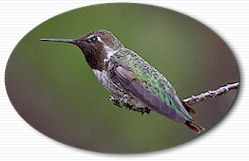
|

